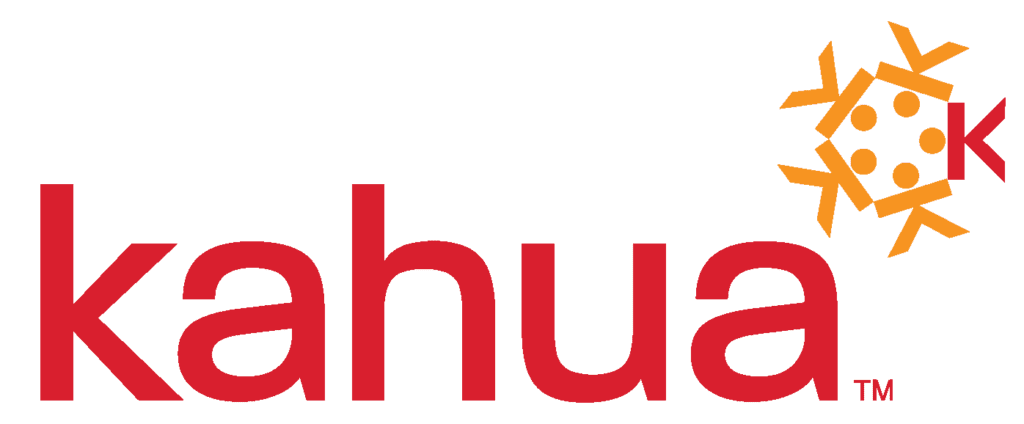Construction Handover: Top Methods for Efficient Project Handover
When wrapping up a construction project, documentation handover can feel like passing a baton in a relay race. Except in this case, the baton is a pile of critical documents, drawings and manuals and dropping it can lead to serious operational headaches. A smooth and efficient handover process is essential for ensuring that the new owners, facility managers and stakeholders have everything they need to maintain and operate the structure effectively.
In this guide, we’ll talk about the best strategies for optimizing your construction project handover, from meticulous planning to leveraging technology and ensuring seamless knowledge transfer.
Overview of Construction Handover
A construction handover is the final phase where the project transitions from the construction team to the client, facility management team or building operator.
This phase helps properly transfer all documentation, warranties, manuals and compliance records, ensuring a smooth transition into operation and maintenance. A well-executed handover reduces post-construction disputes, operational inefficiencies and unnecessary rework.
Pre-Handover Planning
The success of a documentation handover starts long before the final stages of construction. Early planning ensures all parties are aligned and expectations are clear.
Establishing Clear Handover Criteria
To avoid last-minute chaos, define clear handover criteria early. Identify essential documentation, compliance requirements and operational details needed for a successful transfer. Stakeholders should agree on the deliverables and key performance indicators (KPIs) that will signal project completion.
Using Asset-Centric Project Management
An asset-centric approach structures documentation around individual assets rather than generic project files. Organizing information by specific building components, such as HVAC systems, electrical setups and safety equipment, ensures easier access and long-term usability.
Documentation and Information Management
Keeping track of construction documentation can be overwhelming, but a structured system makes it manageable.
Implementing Digital Documentation Systems
Paper documents get lost, but digital solutions ensure accessibility and organization. Here’s how you can optimize the documentation handover:
-
Use cloud-based platforms to store, manage and share project data in real-time.
-
Standardize documentation formats to make retrieval easier for facility managers.
-
Automate data entry with AI-powered tools to minimize errors.
Quality Assurance and Inspections
Before handover, you need to verify that everything meets quality standards.
Conducting Thorough Final Inspections
To ensure a smooth transition, conduct final inspections to verify that all work meets quality standards and regulatory requirements. A detailed checklist should cover structural integrity, safety compliance and system functionality.
Key areas to focus on include:
-
Mechanical, electrical and plumbing (MEP) systems. Confirm that the HVAC, electrical and plumbing systems are working correctly, properly calibrated and meet energy efficiency standards.
-
Structural integrity. Verify that all load-bearing components, foundation work and exterior walls conform to engineering standards and show no signs of damage or stress.
-
Safety compliance. Check fire suppression systems, emergency exits, alarm systems and accessibility features to confirm they align with occupational health and safety regulations.
Addressing Defects and Punch Lists
No construction project is flawless upon completion, which is why identifying and rectifying defects before handover is crucial. A punch list, also known as a snag list, is a document that outlines incomplete work, defects or deviations from contract specifications that need correction before final acceptance.
To optimize this process:
-
Use digital punch list software. Platforms like Kahua allow for real-time documentation, photo uploads and task assignments, making it easier to track and close out issues efficiently.
-
Prioritize defects by urgency. Address critical safety concerns first, followed by functional issues that could disrupt operations and finally, aesthetic imperfections.
-
Collaborate with subcontractors. Ensure each trade is accountable for completing their outstanding tasks within the designated timeline.
Training and Knowledge Transfer
Transitioning from construction to operational management can be overwhelming for facility teams. New technology and systems often come with a learning curve and many teams worry about the lack of guidance after the project closes. Acknowledging these challenges early and offering proactive solutions builds trust and ensures a smoother transition.
Organizing Handover Workshops and Seminars
A successful handover doesn’t just involve passing along documents. It requires actively ensuring that the new operators and facility managers understand how to run and maintain the building efficiently.
Organizing handover workshops and seminars is one of the best ways to bridge the knowledge gap between the construction team and the end users. These sessions should be interactive, allowing stakeholders to ask questions, test systems and gain hands-on experience.
Key areas to cover include:
-
System operations. Provide in-depth demonstrations of HVAC, electrical, plumbing and security systems to ensure smooth daily operations.
-
Routine maintenance. Outline scheduled maintenance tasks, such as servicing mechanical systems, inspecting structural components and managing warranties, to prolong the building's lifespan.
-
Emergency procedures. Train facility teams on fire safety protocols, power failure contingency plans and disaster recovery measures to enhance preparedness.
Providing Operational Training for Facility Management Teams
Beyond documentation, ensure that operational staff receive training on maintenance schedules, emergency procedures and system troubleshooting. This helps prevent costly errors and ensures efficient building management.
Utilizing Technology in the Handover Process
Taking care of documentation handover manually may be possible in theory, but it’s tedious and the risk of errors is very high. Thankfully, technology can improve the handover process, so that you don’t have to worry about potential errors.
Asset-Centric Project Management
Traditional project handovers often focus heavily on documentation. An asset-centric approach ensures that every physical component of a building has detailed life-cycle information attached to it. This method shifts the focus from just handing over paperwork to delivering a functional, well-documented asset portfolio that makes facility management more efficient.
Key benefits of asset-centric handover:
-
Improved lifecycle tracking. Catalog assets with manufacturer, installation, warranty and maintenance information. This helps facility managers plan preventive maintenance, reducing unexpected failures and costly repairs.
-
Seamless facility operations. Rather than sorting through stacks of manuals and disconnected data, facility teams can access a digital asset repository, streamlining operations and troubleshooting.
-
Integration with CMMS solutions. Also known as Computerized Maintenance Management Systems (CMMS), these solutions link asset data with maintenance schedules and automated alerts, improving efficiency and long-term facility performance.
How to implement asset-centric project management for handover? There are a few easy steps to consider.
-
Use asset tagging and digital records. Use QR, RFID or barcodes to link building components to a digital asset database.
-
Standardize data collection. All stakeholders should use a single format for asset details for easy post-handover reference.
-
Leverage asset management software. Cloud-based platforms like Kahua allow real-time updates and centralized storage for asset information, reducing information loss and ensuring accessibility.
-
Provide hands-on training. Train facility teams to accurately update asset records.
Financial and Legal Considerations
You can’t do a documentation handover without considering potential financial and legal implications.
Finalizing Project Accounts and Payments
Financial close-out is a crucial step in the handover process. While it’s best to settle most payments before project completion, retention payments are typically held until the process is finalized to make sure all contractual obligations are met. Addressing outstanding invoices, change orders and financial reconciliations promptly helps avoid disputes and ensures a smooth transition for all stakeholders.
Completing Contract Closeout Procedures
Review and finalize all the legal documentation, warranties and compliance certificates before the handover. You need to meet all contractual legal obligations before you can officially close out the project.
Post-Handover Support and Follow-up
Once you complete the handover, you want to move on to another project, but following up and offering support post-handover is equally important.
Establishing a Defects Liability Period
No matter how well you inspect a project before handover, some defects may go unnoticed until after you complete the process.
This is where the defects liability period (DLP) comes in and helps ensure the contractor will address these issues as needed. During this period, the constructor remains responsible for addressing any construction defects or issues that arise after project completion.
But how do you set this period and what is a reasonable duration? The answer depends on the complexity of the project and other factors.
For instance, for small-scale buildings, a 6–12-month period may be sufficient. For large-scale infrastructure projects, a 12–24-month period may be more appropriate to allow for extensive testing and defect identification.
Another thing to consider is that a DLP should ideally cover at least one full operational cycle to ensure that all building systems are tested under different conditions. Plus, some building elements, like roofing materials or mechanical systems, come with manufacturer warranties that may extend beyond the DLP.
Providing Ongoing Technical Support
Offer post-handover assistance through a help desk or dedicated support team to address operational concerns. Even with comprehensive training and detailed documentation, unexpected issues can arise once the facility is in full operation.
Best Practices for Successful Handover
A great handover process means collaboration, foresight and structure. Here are some best practices to keep in mind.
Effective Communication Strategies
Open communication between stakeholders prevents miscommunication and keeps everyone on the same page regarding the handover plan. Regular check-ins and documented discussions help minimize the risk of errors and misunderstandings, leading to an easy handover process.
Implementing a Phased Handover Approach
Instead of a single handover event, consider a phased approach where you transition critical systems and areas gradually. This allows for early troubleshooting and reduces operational disruptions.
Prepare for Handover During Construction
Don’t wait until the end of the project to think about documentation handover. Start organizing and updating records from the beginning, ensuring a structured and efficient transfer when the time comes.
Handover Projects Effectively with Kahua
Managing a construction handover involves more than just delivering a stack of documents. It requires coordination, clear communication and a structured approach to asset management.
Kahua simplifies this process with a secure, cloud-based platform that centralizes and provides easy access to all documentation, including drawings, warranties and O&M manuals.
Instead of scrambling to compile last-minute files, Kahua allows you to:
-
Automate workflows for a streamlined handover.
-
Progressively track documentation to avoid information gaps.
-
Collaborate in real time for seamless communication between teams.
With cloud accessibility, facility managers can retrieve critical data whenever needed, eliminating inefficiencies and ensuring long-term project success.
Start optimizing your construction handover process with Kahua and experience the power of truly Asset-Centric Project Management.


